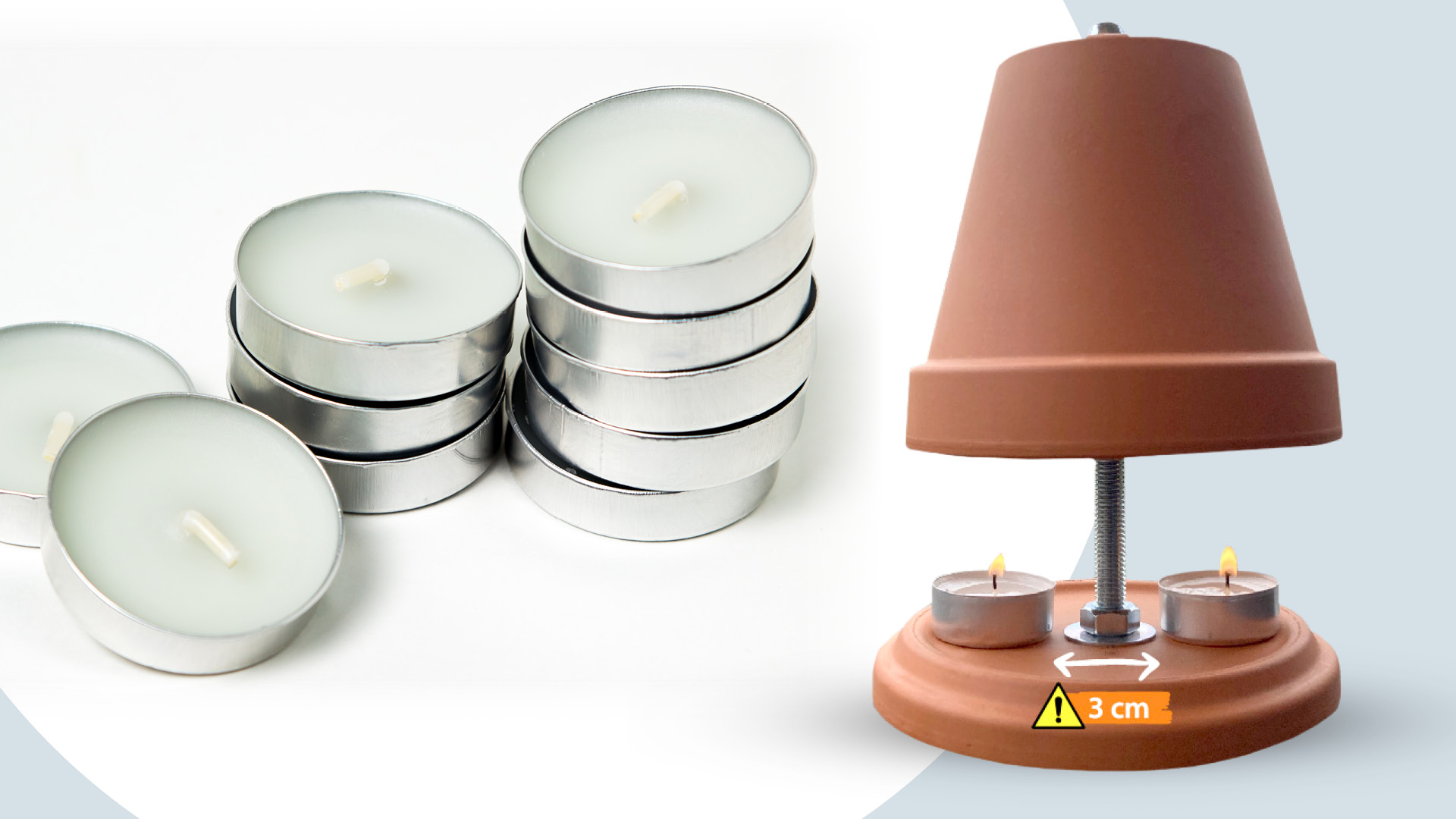
Important for safe operation! Keep your distance.
A stove made of tea lights? At first glance, this sounds like a good idea in view of high energy prices. The construction is very simple and can be done with a few (cheap) tools even by laymen. A tea light stove consists of a larger and sometimes an additional smaller clay pot, which are screwed together with a threaded rod and some nuts and washers. Tea lights are then placed on a coaster to heat the clay pots. At the moment, countless instructions for building tea light ovens are circulating on the internet. Those who are less talented can also buy ready-made sets that only need to be screwed together.
However, the heat output of a single tea light is very low. Therefore, tea lights are not suitable for heating rooms. This does not change if a stove is operated with the tea lights. Already at a distance of one metre, the heat can no longer be measured. To feel an actual effect, you would need many stoves. The rule of thumb here is one tea light per square metre. A tea light stove is therefore above all a nice and atmospheric decoration.
Tea lights are usually made of paraffin. This is a petroleum product. Like burning oil or petrol, it cannot be extinguished with water. Instead, paraffin fires should be smothered by covering them when they can no longer be blown out. Pictures often show four or five tea lights burning under a tea light stove. And then the nice decorative idea becomes a source of danger!
Danger exists, especially when several tea lights are too close together. Flammable gases can then form and, in the worst case, ignite suddenly. To avoid such gas fires, make sure there is a safety distance of three centimetres between the tea lights. This prevents the candles from melting each other and collecting gases that do not burn down immediately. It is therefore not advisable to place several candles under a single tealight stove if the safety distance of at least three centimetres cannot be maintained.
Further information is available here: ECMA